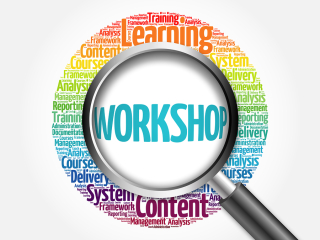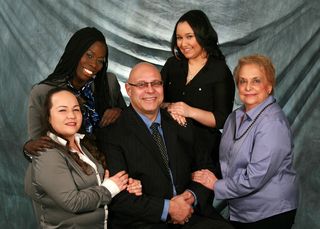I've been working with estate planning attorneys around the United States for almost 20 years, and I am always intrigued about how excited they get when they deliver a presentation, seminar or workshop. The interesting dynamic is how pumped they get in front of a room full of people. It might surprise you to learn that such a situation is not exciting to me or to any LWP attorney, for one simple reason. We have learned that it is not the number of people in the room or your ability to speak to them that matters, but rather your ability to communicate and create relationships with them so they trust you and understand how you can help them accomplish their goals. That’s when they hire you.
 Under the Lawyers with Purpose workshop system, our members are provided three different workshops, depending upon which best matches their personal objectives. We offer members the “Estate Planning Essentials” workshop, the “Seven Threats to Every Estate Plan” workshop, and the “How to Protect Your Stuff in Three Easy Steps” workshop. All three teach the same concepts and utilize similar stories, but most importantly, all connect and relate to the Estate Plan Audit™ utilized in the Vision Meeting™ with individuals who attend the workshop and opt for a meeting with you. They also delve into what estate planning is and the specific issues you want them to know (all contained in our trademarked and copyrighted workshops).
Under the Lawyers with Purpose workshop system, our members are provided three different workshops, depending upon which best matches their personal objectives. We offer members the “Estate Planning Essentials” workshop, the “Seven Threats to Every Estate Plan” workshop, and the “How to Protect Your Stuff in Three Easy Steps” workshop. All three teach the same concepts and utilize similar stories, but most importantly, all connect and relate to the Estate Plan Audit™ utilized in the Vision Meeting™ with individuals who attend the workshop and opt for a meeting with you. They also delve into what estate planning is and the specific issues you want them to know (all contained in our trademarked and copyrighted workshops).
Why is this relevant? Because the excitement over the number of people in your workshop is baseless if none of them hire you. If your workshop can't show people how you can help them and explain how your solutions are relevant to them and will benefit them, then stay home with your family rather than waste the time.
So, to avoid that scenario, let’s consider the core elements of a successful workshop. First, ensure in advance that you are clear on who is registered to attend your workshop. You should also ask how each attendee heard about you; that is, what source of marketing got them to call your office (a professional relationship, a retail advertisement, or other). Second, your staff should welcome all attendees during enrollment, excite them about the workshop they're going to attend and touch on how it will offer new ideas to solve their concerns. Third, your team should follow up with attendees ahead of time and confirm attendance. Fourth, during the workshop it is essential to set the expectation up front that you will make commitments to the audience, and to make sure the audience understands that you expect them at the end of the workshop to complete the evaluation and request a meeting if they think it's appropriate. This is perhaps the most important part of the workshop – not all the education you provide, but rather the invitation for them to move forward with you at the conclusion. You must be enthusiastic and excited for them to come in and apply what they learned to their personal situation, in hopes of helping them accomplish their goals and objectives based upon what they’ve learned in the workshop. If you don't believe in yourself, why would they?
And finally, another very important element of every workshop, one in which I have found that most lawyers fail, is to follow up with the attendees to schedule the appointment. I cannot tell you how many times I've worked with attorneys who either neglected to get an evaluation at the end or got the evaluation and failed to follow up on it.
Life is busy. People don't have “free time” to just pop into a workshop, and oh, by the way, I can't wait to go see a lawyer tomorrow to talk about all this crazy stuff. For most people, their lives are busy and complicated, and they're confused. You must be the one who clarifies the confusion and shows them a simple approach for them to get their concerns solved.
That's what the Lawyers with Purpose workshop system does. In fact, we call it the Client Enrollment System™ because it's a complete process, from identifying the client's needs after their initial contact with you, to the point of their engagement with your firm. That's the significance of workshops and seminars: not the excitement of delivering them, but the excitement of actually being able to help people implement great planning solutions that protect them and their family. Contact Lawyers with Purpose today if you want to learn more about what we can bring to your estate and/or elder law practice. Just click here and give us a little information then download our membership brochure.
David J. Zumpano, Esq, CPA, Co-founder Lawyers With Purpose, Founder and Senior Partner of Estate Planning Law Center












